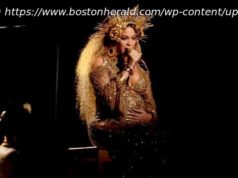Jazz musician Thelonious Monk’s was born on Oct. 10,1917. He would have turned 100 on Tuesday.
Jazz legend Thelonious Monk was born 100 years ago. Tuesday would’ve been his 100th birthday.
The piano was Monk’s instrument of choice and his fingers striking, slapping and tapping piano keys to his own compositions made him famous – one of the most influential jazz musicians of the 20 th Century.
In fact, he helped create the genre’s modern incarnation. In particular, he’s credited by many as the father of bebop, although he was later overshadowed in that regard by contemporaries — saxophonist Charlie Parker and trumpeter Dizzy Gillespie, in particular.
Born in Rocky Mount, Monk moved to New York at age 5. He died at age 64 in Englewood, New Jersey.
His compositions were often sparse and playful, his style heavy-handed in its use of percussion.
In short, Monk’s music was distinctive.
The word most ascribed to Monk’s stylized uniqueness is “angular.”
U. S. Rep. G. K. Butterfield, D-N. C., is proud that Monk is a Tar Heel product.
On Tuesday, Butterfield stood in the well of the U. S. House to honor Monk’s memory.
“Though Monk and his family left Rocky Mount for New York City when Thelonious was a child, scholars and fellow musicians say Monk’s North Carolina roots had an important influence on the man and his music,” Butterfield said.
“Thelonious Monk began studying classical piano at age 11 and showed an early aptitude for the instrument,” Butterfield said. “By the time Monk was 13 years old, he had won the weekly amateur competition at the Apollo Theater so many times that management banned him from re-entering the contest.”
Duke University dean and vice provost for undergraduate education, Stephen Nowicki, is a jazz enthusiast and longtime fan Monk.
“He comes from the tradition of stride piano, which sounded very old-timey,” Nowicki said. Monk died in relative obscurity but his following has exploded in the years since his death.
“The jazz musician of jazz musicians,” Nowicki said. “Monk was challenging right from the beginning. You watch these old videos of him and you see his hands and you think ‘Is he really going to hit that note?’
“His right hand just hangs, hanging there over the piano. Then, he does. He hits it. And you think, ‘My God,’” Nowicki added.
In stride playing, a jazz pianist plays the melody with the right hand while the left hand plays a bass note or octave on the strong beat and a chord on the weak beat. The style developed in Harlem out of the ragtime genre in the 1920s, musicologists say.
Robert Trowers, A lecturer in the NCCU School of Music, said Monk was “basically” known as cutting edge and “in some ways” unorthodox.
“The way he played the piano didn’t fit the mold of his times, when people were still imitating Bud Powell,” Trowers said, of Monk’s friend and piano icon contemporary.
Bud Powell’s style was to play block cords with the left hand, Trowers said, and he used his right hand to play horn-like piano runs.
“But, Monk was defiantly different,” Trowers said. “He’d break-up the rhythm and would play a lot of interesting intervals.
“It’s hard to describe. It’s one of those styles you would have to hear to understand it. Because, it’s jarring. His choices were always unexpected.” he said.
Sign up today for a free 30 day free trial of unlimited digital access.






